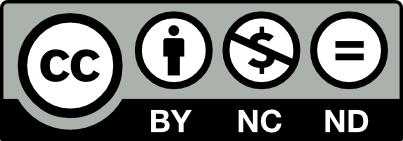This page is licensed under Creative Commons under Attribution 4.0 International. Anyone can share content from this page, with attribution and link to College MatchPoint requested.
Mini-Guide: How to Set Your Target Test Score for Test-Optional Colleges
Test-optional doesn’t mean test-ignored! Submitting a strong SAT or ACT score can still boost your application, showcasing your academic readiness and helping you stand out in a competitive pool. Start by researching the 25th–75th percentile score ranges for your dream schools—like NYU (targeting 1540+ SAT) or Wake Forest (aiming for 34+ ACT). Aiming for the 75th percentile or higher ensures your score is a strength, not just a formality.

Why Test Scores Still Matter at Test-Optional Colleges
Even at test-optional schools, admissions officers often consider test scores as a valuable data point when available. Strong scores can:
- Highlight Academic Strength: Test scores provide a consistent metric to compare students from different educational backgrounds.
- Support Other Application Elements: A high score can reinforce strong grades or provide additional context if your GPA is slightly lower.
- Demonstrate College Readiness: A score above the college’s typical range shows you’re prepared for rigorous coursework.
Ultimately, submitting a competitive score could make your application more compelling in a competitive pool. For this reason, setting an ambitious but realistic target score is a key part of your test prep strategy.
Steps to Set Your Target Test Score
1. Research Score Ranges for Your Target Colleges
The first step is understanding the score ranges for admitted students at your target schools. This information is often found in the school’s Common Data Set or platforms like the College Board’s Big Future. Look for the following:
- The Middle 50% Range: This is the range between the 25th and 75th percentile of admitted students' scores.
- The 75th Percentile: This is the score that 25% of admitted students exceeded. Targeting this score puts you in a strong position.
Example: NYU At NYU, the middle 50% range for SAT scores is typically 1370–1540. By targeting a score above the 75th percentile (1540), you can position yourself as a highly competitive applicant, especially for selective programs like Stern School of Business or Tisch School of the Arts.
2. Take a Diagnostic Test
Before setting a goal, establish your starting point by taking a diagnostic test. You can use the PSAT for the SAT or find free practice tests for both the SAT and ACT online. Testing both formats can help you decide which exam suits you better.
Once you know your baseline score, consider how much improvement is achievable. Many students see an increase of 150–200 points on the SAT or 3–4 points on the ACT with dedicated preparation. Set a target that stretches you but remains attainable.
3. Compare Your Scores to College Benchmarks
Evaluate where your current scores fall within the ranges for your target colleges:
- Above the 75th Percentile: Your score will likely strengthen your application.
- Below the 25th Percentile: Consider applying test-optional or focusing on other application strengths.
- Within the Middle 50%: Your score will be competitive, but higher is always better.
Example: Wake Forest University Wake Forest University is proudly test-optional, but their middle 50% ACT range (31–34) for admitted students shows a clear preference for strong scores when submitted. Scoring above the 75th percentile (34) can give your application an edge, particularly for competitive scholarships.
4. Consider Your College List and Priorities
For selective schools, submitting a score at or above the 75th percentile can provide an edge. For less selective schools, a score in the middle of the range might suffice. Balance your goals with the competitiveness of the schools on your list.
Why the 75th Percentile Should Be Your Goal
Aiming for the 75th percentile or higher demonstrates that your academic preparation is among the strongest of admitted students. It not only boosts your competitiveness but also provides flexibility in the admissions process. While test scores are only one piece of the puzzle, excelling in this area can open doors and offset potential weaknesses in other areas of your application.
Time and Resource Management
Effective test preparation requires planning. Evaluate how much time and energy you can devote to studying and consider resources like tutors, prep courses, or online tools. If time is limited, focus on areas where you can achieve the most improvement.
Beyond Test Scores: A Balanced Approach
While setting a target score is essential, remember that test scores are just one aspect of your application. Equally important are:
- Strong Academic Performance: Maintain a competitive GPA and take challenging courses.
- Meaningful Extracurricular Activities: Demonstrate leadership and passion in areas that interest you.
- Compelling Essays and Recommendations: Share your unique story and seek recommendations from those who know you well.
These elements become even more critical if you decide not to submit test scores. A well-rounded application can shine in the absence of standardized test results.


